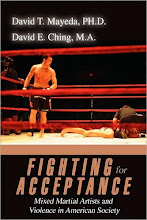
Peter McAllister, an Australian anthropologist residing temporarily in Cambridge, studied fossilized footstep prints of Aboriginal hunters from about 20,000 years ago, documented in his book, Manthropology. He gauged the prints of an Aboriginal, dubbed "T8," and concluded that T8's running speed on soft ground translates to greater running speed than current 100 meter and 200 meter world record holder, Usain Bolt, on a rubber track. From the Reuters.com story:
An analysis of the footsteps of one of the men, dubbed T8, shows he reached speeds of 37 kph on a soft, muddy lake edge. Bolt, by comparison, reached a top speed of 42 kph during his then world 100 meters record of 9.69 seconds at last year's Beijing Olympics.
In an interview in the English university town of Cambridge where he was temporarily resident, McAllister said that, with modern training, spiked shoes and rubberized tracks, aboriginal hunters might have reached speeds of 45 kph.
"We can assume they are running close to their maximum if they are chasing an animal," he said.
"But if they can do that speed of 37 kph on very soft ground I suspect there is a strong chance they would have outdone Usain Bolt if they had all the advantages that he does."
McAllister also argues that women from eras ago were "superior," as exemplified through their ability to out-do Arnold Schwarzenegger in an arm wrestling contest. Isn't it interesting how he uses an example which pries at men's physical insecurities by having a woman from the past being able to out-muscle a male icon of physicality?
Any Neanderthal woman could have beaten former bodybuilder and current California governor Arnold Schwarzenegger in an arm wrestle.
[...]
McAllister said a Neanderthal woman had 10 percent more muscle bulk than modern European man. Trained to capacity she would have reached 90 percent of Schwarzenegger's bulk at his peak in the 1970s.
Okay, so comparative anthropology shows that average Homo sapiens from back in the day were more athletic than today's elite athletes. Maybe, maybe not. According to McAllister, they were. But so what? What's the big deal? Who cares, and why?
Apparaently McAllister cares becuase this decline in athleticism is a so-called indicator of men's decline, or physical "softening" in society. Good lord, how long is this male identity crisis in physicality going to go on? Note how McAllister assigns value to masculine physicality. More from the Reuters.com article:
"If you're reading this then you -- or the male you have bought it for -- are the worst man in history. [emphasis added].
"No ifs, no buts -- the worst man, period...As a class we are in fact the sorriest cohort of masculine Homo sapiens to ever walk the planet." [emphasis added].
[...]
Manthropology abounds with other examples:
* Roman legions completed more than one-and-a-half marathons a day carrying more than half their body weight in equipment.
* Athens employed 30,000 rowers who could all exceed the achievements of modern oarsmen.
* Australian aboriginals threw a hardwood spear 110 meters or more (the current world javelin record is 98.48).
[...]
"We are so inactive these days and have been since the industrial revolution really kicked into gear," McAllister replied. "These people were much more robust than we were."
We already know how society at large privileges manhood in terms of physical strength and aggression. We see this pervasively in popular culture (e.g., movies, television, novels).
But now we see how even academia perpetuates the socially constructed understanding that "good" masculinity is rooted in physical strength, power, an speed. Whereas the "worst" man is someone who is unathletic and who has been "feminized" by a more sedentary corporate culture.
Gee, this is the premise of the movie, Fight Club. Knowing that even academicians perpetuate these gendered values, it's no wonder guys continue to engage in violence against people from all genders and sexualities across the globe.
(Photo courtesy of Reuters.com)









No comments:
Post a Comment